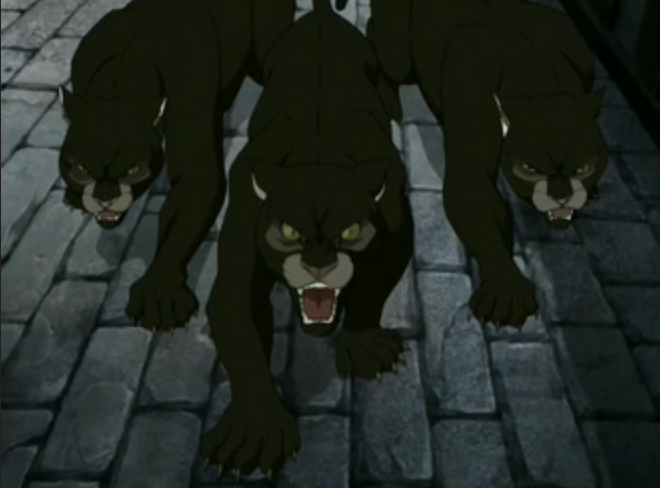Pygmy Puma
The Pygmy Puma is a sub-species of the genus Puma in the family Felidae. It is a small cat with fur going from grey to reddish, depending on habitat. They are mostly found in the Gi Kingdom and Vrachos Kingdom. They are intelligent pack hunters who usually go for easier to kill animals. They can be very aggressive in the wild, however some have been domesticate.
Basic Information
Anatomy
Adult males can reach around 1,30 meters from nose to tip of tail, and a body weight typically between 8 to 12 kg. Females can reach around1,10 meters from nose to tail, and a body weight between 7 and 10 kg. They also have tails ranging from 20 to 35 cm in length. The heads of these cats are round, with erect ears. They have powerful forequarters, necks, and jaws which help grasp and hold prey. They have four retractable claws on their fore paws, and also their hind paws.
The majority are found in more mountainous regions, so they have a thick fur coat to help retain body heat during freezing winters. Depending on the location of their habitat, the puma's fur varies in color from brown-yellow to grey-red. Individuals that live in colder climates have coats that are more grey than individuals living in warmer climates with a more red color to their coat.Pygmy Pumas are incredibly powerful predators with muscular hind legs, which are slightly longer and stronger than the front, that enable them to be great leapers. They are able to leap as high as 2 meters into the air and as far as 6-7 meters horizontally. They can reach speeds up to 70 km/h, but they are much better adapted for short and powerful sprints to catch their prey.
Growth Rate & Stages
Breeding season normally occurs in spring, with a three-month gestation period resulting in a litter size up to six kittens. After mating, male and female part ways; the male continues on to mate with other females for the duration of the mating season, while the female cares for the kittens on her own. Like most other felines, kittens are born blind and remain completely helpless for about 2 weeks until their eyes open. Kittens are born with spots and eventually lose all of them as they reach adulthood. The spots allow the kittens to hide better from predators. Kittens are able to eat solid food when they reach 2–3 months of age, and remain with their mother for about a year. The life expectancy of individuals in the wild averages 12 years, but can reach up to 25 years in captivity.
Ecology and Habitats
Members of the genus Puma are primarily found in the mountains of the Gi Kingdom and the Vrachos Kingdom, where a majority of individuals can be found in rocky crags and pastures lower than the slopes grazing herbivores inhabit. Though they choose to inhabit those areas, they are highly adaptive and can be found in a large variety of habitats, including forests, tropical jungle, grasslands, and even arid desert regions. Unfortunately, with the expansion of human settlements and land clearance, the cats are being pushed into smaller, more hostile areas. However, their high adaptability will likely allow them to avoid disappearing from the wild forever.
Dietary Needs and Habits
Members of this genus are large and powerful carnivores. The majority of their diet includes small animals such as mice, rats, birds, fish, and rabbits. Larger individuals are able to catch larger prey such as koalasheep. They occasionally take livestock in areas with high populations of them.




Comments
Author's Notes
Sources: https://avatar.fandom.com/wiki/Pygmy_puma